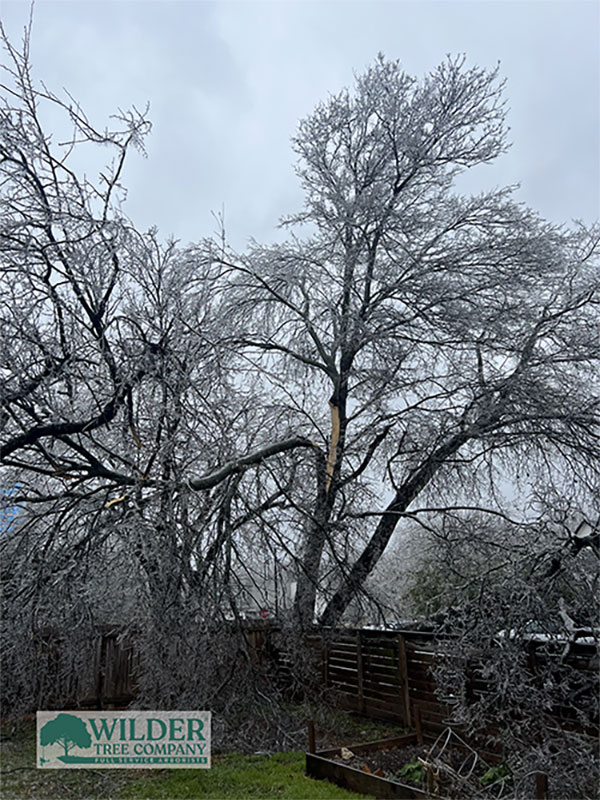The 2024 Farmers Almanac warns: the hot dry summer we’ve had means a cold wet winter. If we are facing another freeze like we had in ‘21 & ‘23, how can you prepare your trees to withstand an ice storm?

Last February we saw first hand the level of destruction these storms can bring. Our crews serviced hundreds of homes across the city, and in doing so we noticed patterns. The neighborhoods that saw the most damage were those who had not kept up with their trimming. The trees’ crowns were densely packed, giving the ice too much to hold on to. Often, this caused trees to split completely down the middle requiring expensive removals, leaving yards bare. Large, heavy, overextended branches were the first to go. In cases where they had loomed over homes and other property they caused significant damage.
When the storm first hit we felt bad for the clients who had just paid for us to prune their trees, but quickly we realized that while they had not completely escaped the ordeal – the damage they saw in their trees was much less severe. If we had known ahead of time that a storm like that was on the way many more people would have taken the time to prepare. That is the situation we are in now.
The following can be removed to protect your trees from ice damage:
- Defective / Dysfunctional limbs: These include overextended branches requiring weight reduction pruning or removal, limbs in densely packed canopies, branches with bad connection angles, crossing or rubbing branches, double leaders, etc
- Dead limbs: often brown and brittle, have flaking bark or no bark, and the leaves are gone or dead
- Dying limbs: may be partially dead, or they may have discolored bark and have brown or wilting leaves.
- Damaged branches: could be broken or have sections of badly scraped bark.
- Diseased limbs: could have a variety of symptoms such as cankers (sunken portion), discoloration of the bark, wilting leaves, or discolored leaves.
Annual pruning is recommended for most trees but some older mature trees can receive bi-annual pruning. Young trees may need structural pruning more often than once a year to achieve their species’ healthiest branching structure. Never have more than 25% of a canopy pruned at one time, to avoid added stress for a tree. Leave the water sprouts on tree trunks, they are “food factories” for a tree. If you’d like them removed, select specific ones to remove, not all at once. Another way to help your trees this winter is to mulch your tree’s root ball with 2-3” of organic mulch. This will help keep the roots moist and protect them from freezing in cold temperatures.
To schedule an appointment to have us review your trees for storm preparation, call 512-885-TREE (8733), send us an email, or fill out our contact form. We will provide a thorough evaluation, take pictures and videos showing exactly how you can prepare your trees before winter.